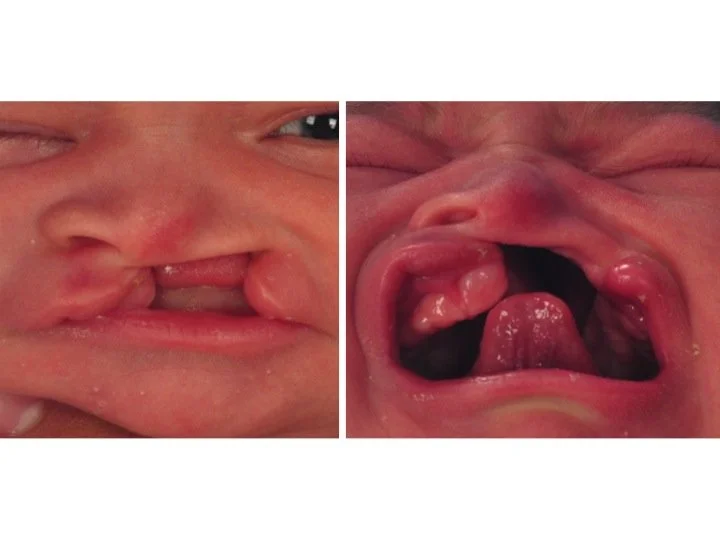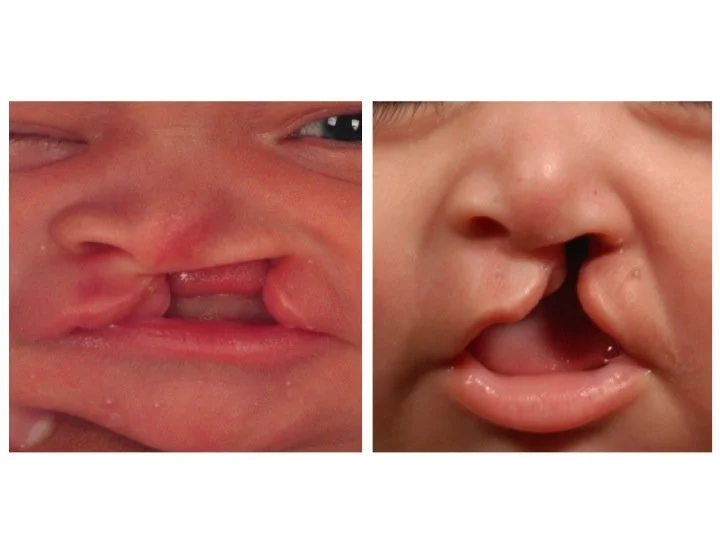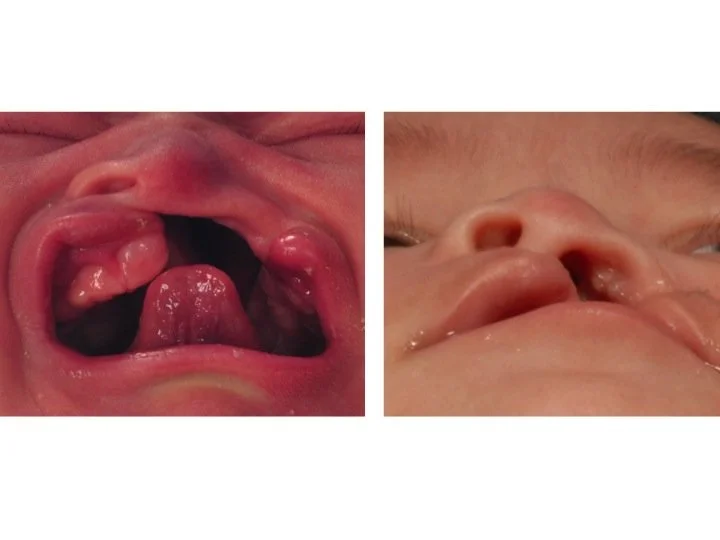Nasoalveolar Molding
Cleft lip and palate results in a separation of the lip, gums and palate. The separation of these structures causes significant deformity of the lip and the nose. The changes in nasal shape occur because the defect extends through the floor of the nostril. The upper portion of the nostril must straddle the cleft, resulting in flattening of the nasal tip and downward displacement of the outside portion of the nostril.
In many centers, a preliminary surgery called lip adhesion is required to narrow the cleft prior to the final lip repair. Nasoalveolar molding (NAM) was introduced to improve the results of cleft lip repair without additional surgery.
NAM is started shortly after birth. NAM harnesses the growth of the gums and facial bones to narrow the gap in the gums. As the width of the gap in the gums is reduced, the space between the middle and side parts of the lip and nose move closer to a normal position. This improvement prior to surgery makes it easier to restore a normal shape to the lip and nose. I believe that NAM allows me to achieve better functional and aesthetic results and may lead to needing less surgery in future.
-
· Align and approximate the gums
· Reshape the deformed nostril on the cleft side
· Reposition the nasal tip on the cleft side
-
· NAM uses a custom made molding plate that we call a NAM appliance. The NAM appliance fits the gums like a denture. The appliance has some room at the ends of the gums. The gums grow into this space and toward one another. This narrows the width of the cleft.
· After about 4-6 weeks, the gums have grown close enough that the tension on the skin and cartilage of the nose is relieved. This allows the skin and nasal cartilage to be molded into a to better position using a nasal extension from the NAM appliance.
-
NAM can only provided by an orthodontist with specialized training in craniofacial orthodontics. I exclusively work with Dr. Yongjong Park at Children’s Health in Dallas. Infants with cleft lip and palate visit the cleft orthodontist within the first 2 weeks of life. At their initial visit, the orthodontist takes an impression of the gums that is used to make the NAM appliance. The appliance is given to the family about one week from the time of the impression.
The NAM appliance is held into position in the baby’s mouth by applying a small amount of denture adhesive and skin tape applied to the cheeks. The baby is growing 24 hours per day every day, therefore the baby wears the appliance almost 24 hours per day, including feeding. The appliance is only removed when it needs to be cleaned which is every 12 hours. We make sure that the family feels comfortable with the process before going home. All of the supplies needed are provided to the family with the delivery of the appliance.
After delivery of the NAM appliance, the orthodontist adjusts it every week at the beginning of treatment and this interval is then adjusted depending on treatment progress. During these adjustments space is created at the ends of the space for the gums in the appliance. The gums will then grow into this space over the next week. Each appointment takes about 30 mins. Typically, the gap in the gums (alveolar segments) will be approximated first. Once this is achieved the tension is taken off the nostril, allowing shaping of the nose (nasal cartilage). A nasal prong is added to the NAM appliance during the nasal shaping part of the treatment. We continue NAM until the desired corrections in the gums, lip and nose are achieved. The average duration of treatment is about 3 months but this may vary according to individual needs. Looking at the representative before and after NAM photos below, it is easy to appreciate how NAM impacts the quality of the result obtained from the cleft lip repair.
NAM is an effective technique that is applied by the infant’s parents daily. We find that parents derive a huge sense of satisfaction by playing an active role in helping improve their child’s result from cleft surgery through their role in the NAM process.





